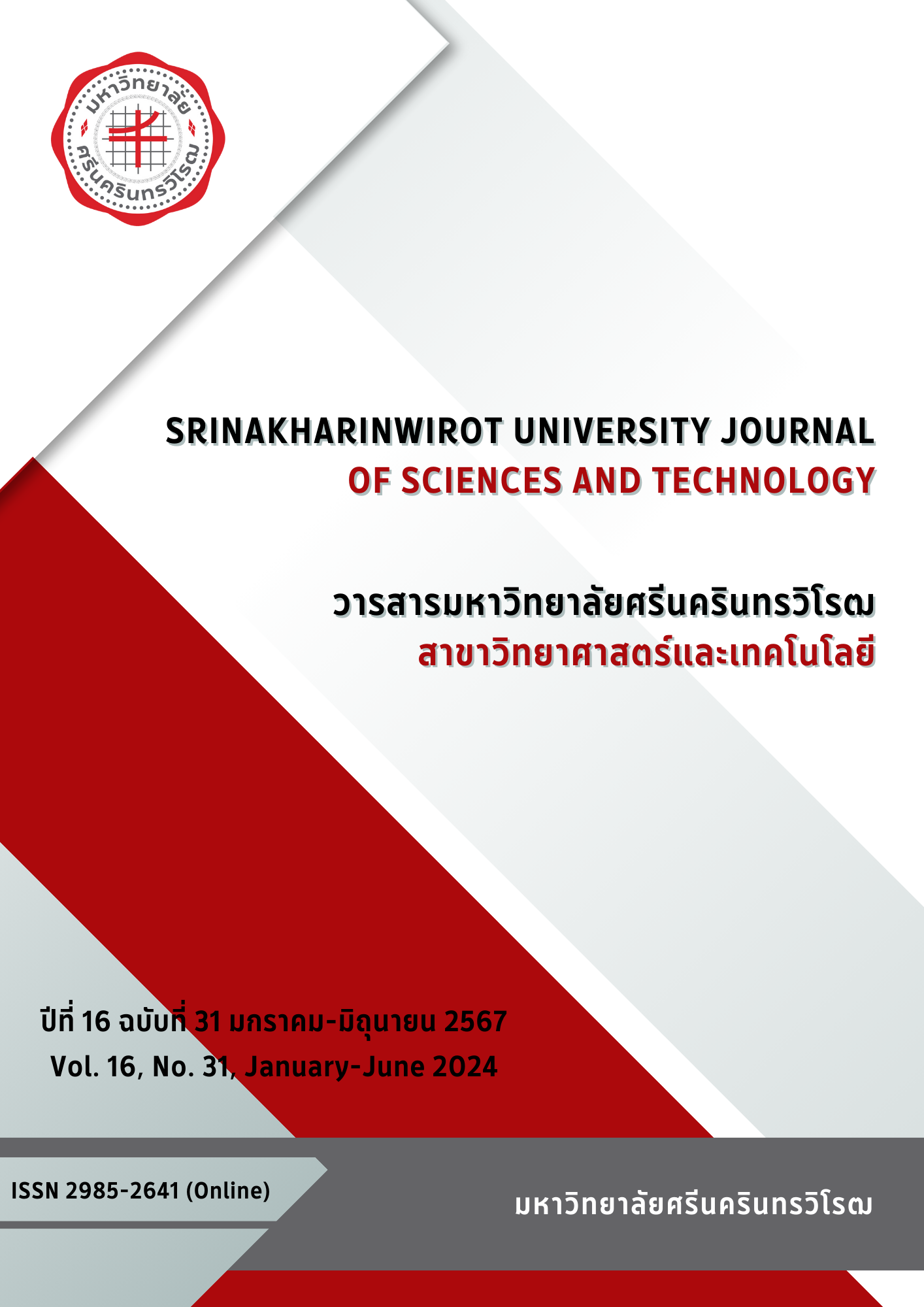EFFECT OF BIO - EXTRACTION FOR CONTROLING OF UNDERGROUND TERMITES Coptotermes gestroi (Wasmann)
Keywords:
Bio-Extraction, Underground TermitesAbstract
The effect of Bio - extraction for controlling of underground termites Coptotermes gestroi (Wasmann) by toxicity testing in laboratory were studied. The treatments were Camellia extracts, Camellia seed oil, Tobacco extract, Kaffir lime oil and water (control) were used as treatments. The experiment was conducted by using the factorial in CRD with three replications for each treatment, by the first time during October – November 2020 and the second time during July – August 2021. The results of first period showed that the mortality of the termites after 12 hours spaying with Tobacco extract 10 % (7.23 %) was significantly higher mortality than Camellia extracts 10 % (6.26 %), Tobacco extract 5 % (4.88 %), Camellia seed oil 10 % (3.00 %), Camellia extracts 5 % (2.12 %), Kaffir lime oil 10 % (1.21 %), Camellia seed oil 5 % (0.53 %), Kaffir lime oil 5 % (0.33 %) and water (0.00 %), respectively. After 108 hours spaying, Camellia extracts 10 %, Camellia seed oil 10 %, Tobacco extract 5 % and Tobacco extract 10 % (10.00 %) was significantly higher mortality than Camellia extracts 5 % and Kaffir lime oil 10 % (5.15 %), Kaffir lime oil 5 % (4.16 %), Camellia seed oil 5 % (2.86 %) and water (0.00 %), respectively. The results of second period demonstrated that mortality of the termite after 12 hours of spaying with Tobacco extract 10 % (7.32 %) was significantly higher mortality than Camellia extracts 10 % (6.51 %), Tobacco extract 5 % (4.15 %), Camellia seed oil 10 % (3.15 %), Camellia extracts 5 % (2.21 %), Kaffir lime oil 10 % (1.12 %), Camellia seed oil 5 % (0.43 %), Kaffir lime oil 5 % (0.33 %) and water (0.00 %), respectively. All pocedures were statistically different at the level of confidence (P < 0.05).
Downloads
References
Thani, N. (2014). Termite biodiversity and its relationship with ecosystems Deciduous and dry evergreen forests in the Sakaerat Biosphere. Nakhon Ratchasima Province. In Fiscal Year 2010 Grant Research Report. Academy of science Suranaree University of Thechnology, Nakhon Ratchasima.
Sornnuwat, Y. (1999). Natural resistance of some species of rubber trees to termite infestation Underground. In Minutes of the Seminar on Rubberwood and Rubberwood Trees: Vol. 2. Forest Department, Bangkok. (pp. 61-69).
Chaikut, K. (2012). Diversity of termites in the Similan Islands National Park Phang Nga Province. In Annual Forestry Conference 2012, titled “Forests give life. Build the Thai economy.” Royal Forest Department, Bangkok.
Rudolf, H. S., and Su, N. Y. (2017). Featured Creatures. Retrived December 11, 2022, from https://entnemdept.ufl.edu/creatures/urban/termites/havilandi.html
Iqbal, N., Khan, H. A. A., and Saeed, S. (2015). Response of Microtermes mycophagus (Isoptera:Termitidae) to twenty one wood species. PeerJ, 3, e1132. https://doi.org/10.7717/peerj.1132
Sornnuwat, Y., and Jarunee, W. (1997). The study comparative of biological testing methods in laboratories to evaluate the effectiveness of insecticides and wood preservative for the protection of underground termites Coptotermes gestroi Wasmann. Documents published by the Royal Forest Department. Royal Forest Department, Bangkok.
Sornnuwat, Y. (1997). Natural durability of artificial neem wood against invasion of underground termites. In Research on the utilization of artificial neem wood. Forest Product Research and Development Division. Royal Forest Department, Bangkok (pp. 183-190).
Charoenkrung, K., Wasachon, P., Thidawan, C., and Naruecha, J. (2014). The effectiveness of neem wood on the infestation of wood - destroying termites and Approaches to Economic Value. In Yosanan Phromchotikul. Research on the utilization of neem trees to increase economic value. Office of Forest Research and Development, Royal Forest Department, Bangkok. (pp. 55-67).
Lee, C. Y., and Neoh, K. B. (2014). Biology of termites and pest status. In Termites of Singapore A Scientific Guide for Pest Management Professionals. P&Y Media Sdn Bhd@Delimax (M) Sdn Bhd, Malaysia. (pp. 8-33).
Charoenkrung, K., and Jarunee, W. (1991). Efficacy of underground termite control chemicals in Thailand. Bureau of Forest Research and Development. Royal Forest Department, Bangkok.
Tomizawa, M., and Casida, J. E. (1999). Minor structural changes in nicotinoid insecticides confer differential subtype selectivity for mammalian nicotinic acetylcholine receptors. Brit. J. Pharmacol, 127, 115-122. http://use/toxic_49.html
Phimsamhan, S. (1997). Insecticide (2nd ed.). Khon Kaen, Faculty of Agricultural, Khon Kaen University.
Simmons, A. M., and Jackson, D. M. (2000). Evaluation of foliar-applied insecticides on abundance of parasitoids of Bemesia argentifolii (Homoptera: Aleyrodidae) in vegetables. J. Entomol. Sci, 35, 1-8.
Chaipattana Foundation. (2023). Camellia seed oil and other plant oil product research and development center. Retrived December 15, 2022, from http://www.teaoilcenter.org/index
Downloads
Published
How to Cite
Issue
Section
License
Copyright (c) 2024 Srinakharinwirot University Journal of Sciences and Technology

This work is licensed under a Creative Commons Attribution-NonCommercial-NoDerivatives 4.0 International License.
Srinakharinwirot University Journal of Sciences and Technology is licensed Under a Creative Commons Attribution-NonCommercial-NoDerivs 4.0 International (CC-BY-NC-ND 4.0) License, Unless Otherwise Stated. Please Read Journal Policies Page for More Information on Open Access, Copyright and Permissions.



